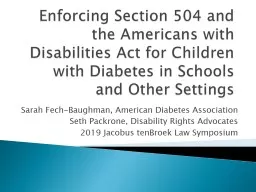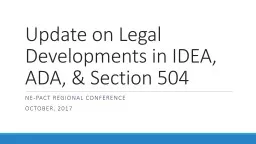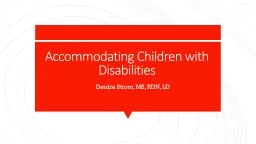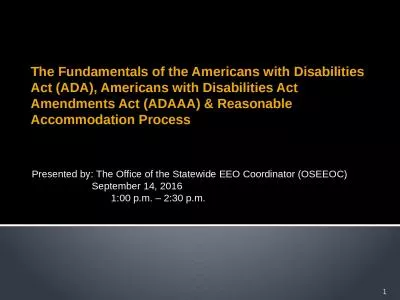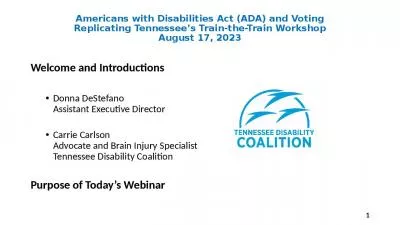PPT-Enforcing Section 504 and the Americans with Disabilities Act for Children with Diabetes
Author : aquaticle | Published Date : 2020-06-25
Sarah Fech Baughman American Diabetes Association Seth Packrone Disability Rights Advocates 2019 Jacobus tenBroek Law Symposium I Overview of Section 504 and
Presentation Embed Code
Download Presentation
Download Presentation The PPT/PDF document "Enforcing Section 504 and the Americans ..." is the property of its rightful owner. Permission is granted to download and print the materials on this website for personal, non-commercial use only, and to display it on your personal computer provided you do not modify the materials and that you retain all copyright notices contained in the materials. By downloading content from our website, you accept the terms of this agreement.
Enforcing Section 504 and the Americans with Disabilities Act for Children with Diabetes: Transcript
Download Rules Of Document
"Enforcing Section 504 and the Americans with Disabilities Act for Children with Diabetes"The content belongs to its owner. You may download and print it for personal use, without modification, and keep all copyright notices. By downloading, you agree to these terms.
Related Documents

